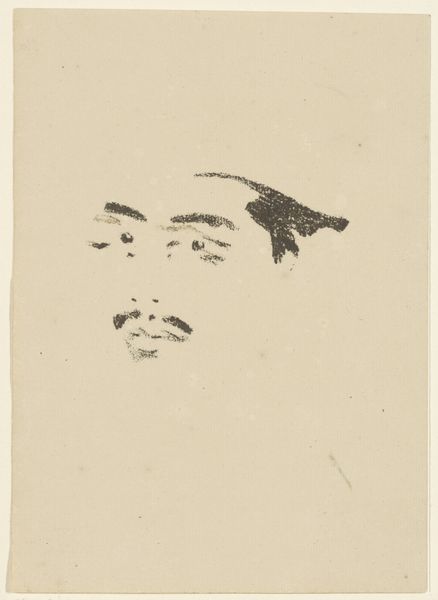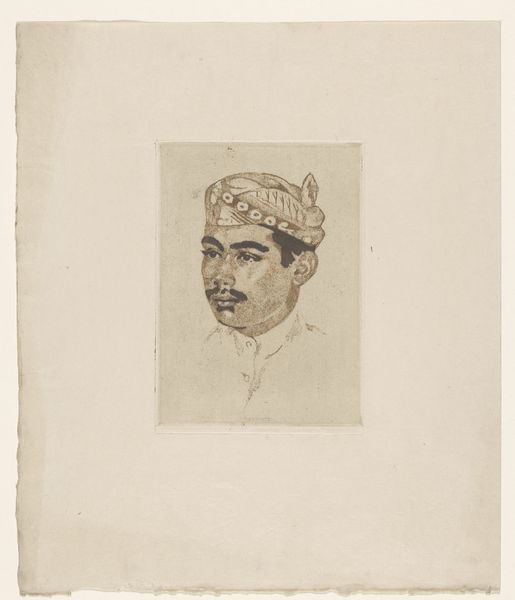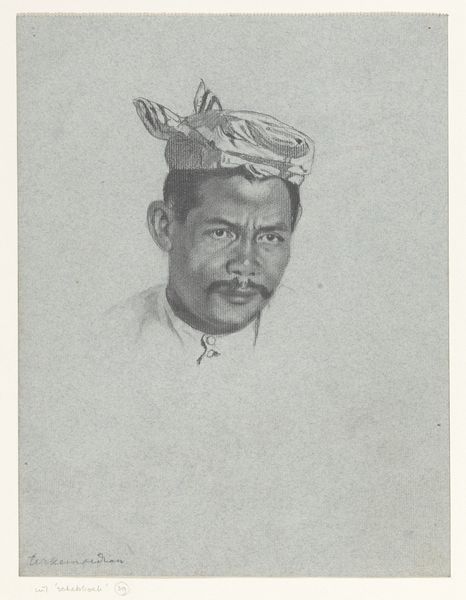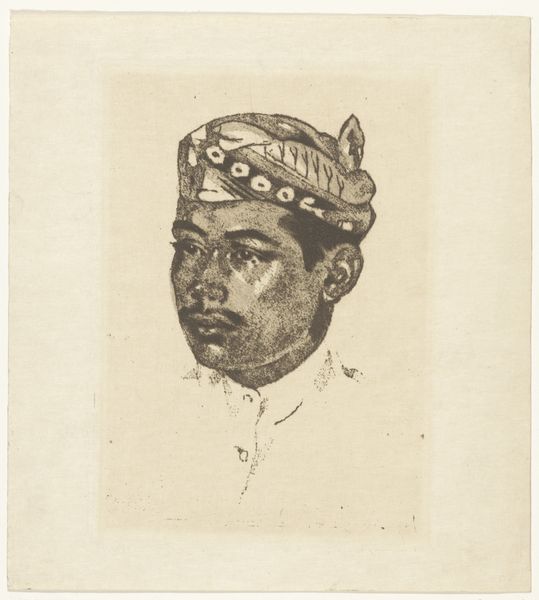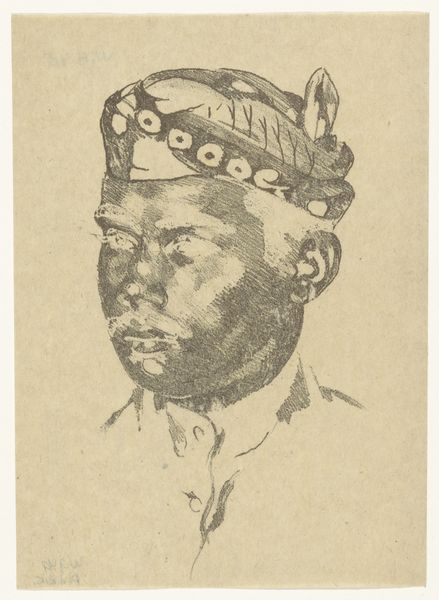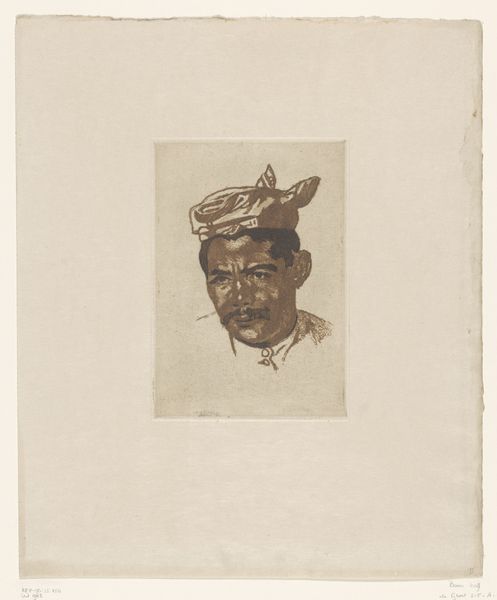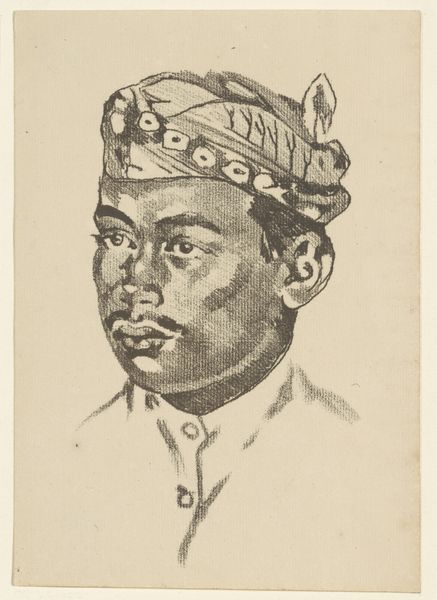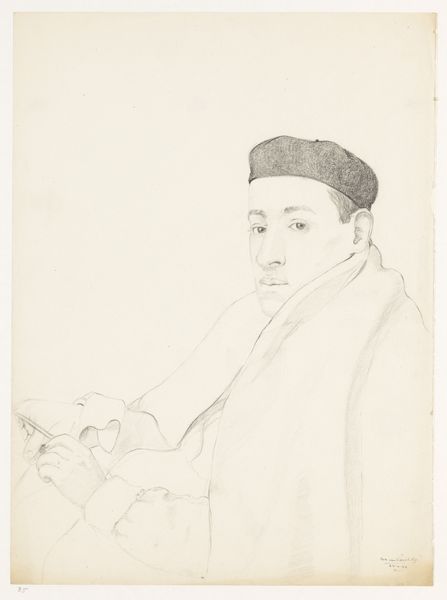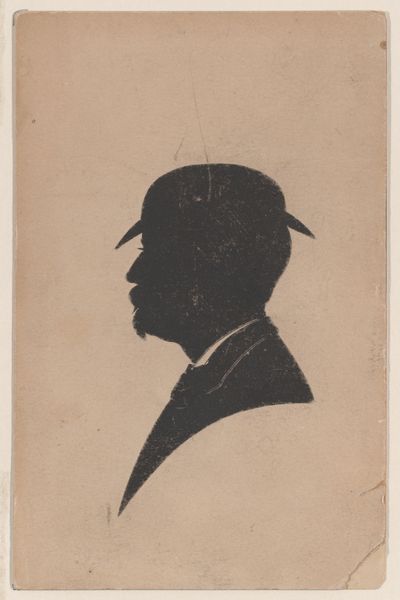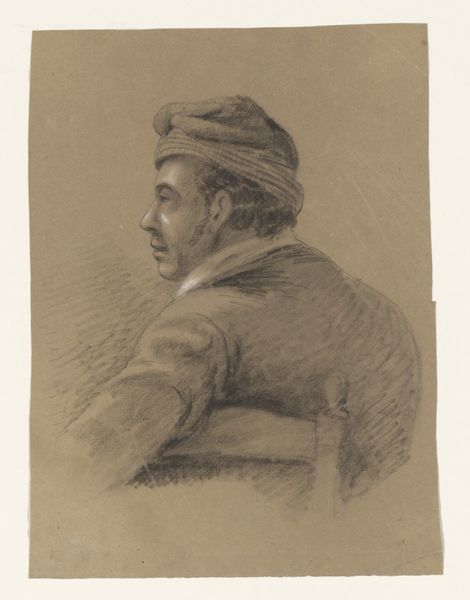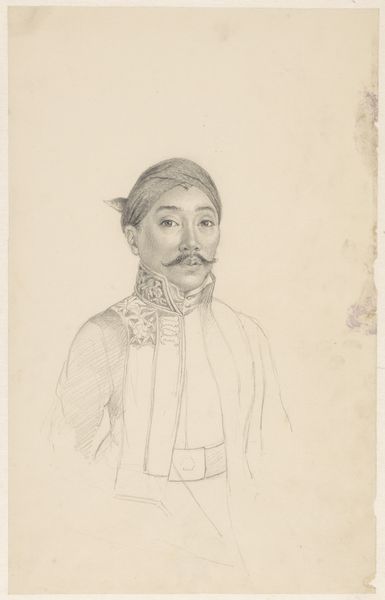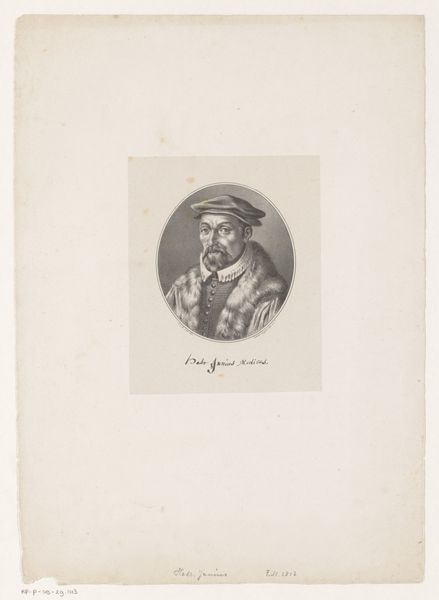
drawing, pencil
#
portrait
#
pencil drawn
#
drawing
#
pencil sketch
#
caricature
#
figuration
#
portrait reference
#
pencil drawing
#
pencil
#
portrait drawing
#
realism
Dimensions: height 185 mm, width 134 mm
Copyright: Rijks Museum: Open Domain
Curator: Willem Witsen’s “Portrait of a Sundanese Man,” created around 1921, is now here with us at the Rijksmuseum. Editor: It’s remarkably sparse, isn’t it? Just pencil on paper, but with such intense concentration in the eyes. There's a vulnerability too. Curator: Witsen belonged to a circle of artists who depicted the Dutch East Indies. It's worth remembering the socio-political context of that period—Dutch colonialism. Images like these participated in shaping public perception, creating visual records of the colonized. Editor: Right, but look at the line work. See how economical his marks are? The pressure applied, the varying directions. This wasn't a mechanical reproduction; this was an encounter mediated by material. What sort of pencil would provide that tone, that broken mark? Was that paper stock chosen carefully? These aren’t inconsequential choices. Curator: It certainly captures a moment in time, filtered through the lens of the artist. Was he aiming for scientific accuracy or artistic expression? The soft rendering adds an element of humanity to the man. Was he a commissioned subject, or a man encountered? Editor: Exactly! It’s almost like we're intruding on a private, almost unguarded, moment. That quick drawing encapsulates a sense of observation. Is the Western gaze truly innocent here, when capturing a fleeting instant of a Sundanese man, especially through readily accessible materials like pencil and paper of the time? Curator: You've introduced a layer of interrogation that is welcome. But isn’t it also about representation? Witsen chose to depict this man, giving him visibility within a Dutch museum context, of all places. Editor: Visibility, yes, but on whose terms? And made using materials directly connected to that time's social structures and economy. To really *see* this work, one must confront all these tangible dimensions. It’s all implicated in the artwork. Curator: I think that’s what’s interesting here. The work raises important historical and social questions about image making. It prompts consideration on how people were perceived. Editor: Indeed, and the humble medium should not disguise that very charged social, political context either. Let's think more about it.
Comments
No comments
Be the first to comment and join the conversation on the ultimate creative platform.
